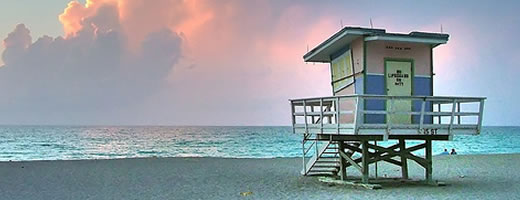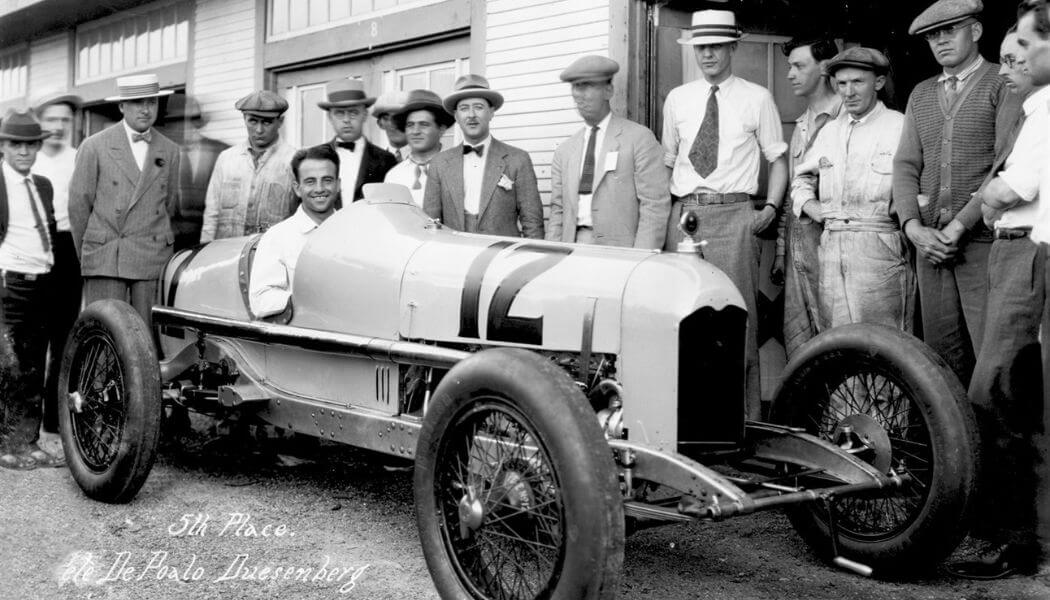Venetian Pool
A limestone quarry provided the materials to build this, one of the most mesmerising public swimming pools in the world. Coral caves and waterfalls decorate it with a genuine celestial beauty, which seems far from anything on earth. Created in 1923 by Denman Fink and Phineas Paist, it is decorated in true Venetian style, combining a cobbled bridge, dreamy water fountains, passages entwined with grapevines and crystal clear waters, which invite you to dive right in. The place to be in Coral Gables during its inaugural years, the Venetian Pool is now the only one of its kind; an ideal spot to escape from the hustle and bustle of the city.
Biltmore Hotel
The Coral Gables community was designed by George Edgar Merrick (1886- 1942), one of the visionaries committed to the urban development of Miami. The Biltmore Hotel is one of the most lavish and spectacular buildings in this area, whose construction cost some ten million dollars. Its most striking feature is the tower, which resembles the Giralda in Seville, while its history is enthralling. In the 1920s – its golden era – the hotel put up a list of celebrities from Al Capone, through to the Duke and Duchess of Windsor and US singer and actress Judy Garland.
Used in the Second World War as a military hospital, it was later converted to a hospital for war veterans, which it remained until 1968.
Visitors are greeted by the huge lobby surrounded by Herculean columns, and must not miss the immense swimming pool where, in the thirties, Johnny Weismuller – best known as the actor who played Tarzan – broke the world swimming record.
Vizcaya
The grandeur of the Biltmore Hotel is equalled, if not surpassed, by Vizcaya: a villa with renaissance-style gardens, built in 1916 at the express wish of agricultural industrialist James Deering. This wealthy businessman suffered from anaemia and, following the advice of his doctors, decided to trade in the icy winters of Chicago for the warm coasts of Miami. Vizcaya is far more than just a mansion; in fact, thanks to its 34 bedrooms decorated in the most diverse styles and its antique works of art, furniture, paintings, tapestries, musical instruments and numerous other objets d’art, it qualifies as a museum.
This monument encompasses the evolution of the different artistic and architectural movements: the library, with its English neoclassical design; the reception with baroque airs; and the living room, which has been described as a replica of one from the renaissance. Deering himself moved to the Old Continent, along with decorator Paul Chalfin, to purchase most of the objects that now adorn the four corners of the mansion.
The music room – perhaps the most beautiful quarter of this palatial residence – is lit up by an incredible chandelier, while a passageway at the back of the mansion allows access to the swimming pool, which can be seen from outside.
This stunning house has played host to the likes of Queen Isabel II of England, King Juan Carlos I of Spain and Pope John Paul II, and has provided the set for several films including Ace Ventura, Pet Detective. The hurricane that struck Miami in 1926 caused serious damage to the building, which was finally handed over to the local authorities by Deering’s heirs in 1952 on the condition that it be opened to the public as a museum.
Holocaust Memorial
Miami Beach is home to one of the largest communities of Holocaust survivors in the world, so it’s not surprising that it boasts a moving monument dedicated to the victims of Nazism, as a symbol of hope. The memorial is an enormous arm of bronze reaching for the sky, designed to appear as the last gesture of a dying man.
Completed in 1990 thanks to donations from individuals, many of whom Jewish, it is inscribed with a serial number from Auschwitz and covered by more than one hundred life-sized figures of men, women and children, doubled over in pain. Kenneth Treister’s creation, one of the most impressive in Florida, is completed with a list of European concentration camps stretching around the central square, and a granite wall inscribed with the names of thousands of Holocaust victims.
Bass Museum of Art
Not far from the Holocaust Memorial in Miami Beach, is this small but interesting museum – the Bass Museum of Art – which exhibits paintings, sculptures and European tapestries from the 15th to the 17th century. Its galleries exhibit permanent collections made up of over 2,800 works, many of which were donated in 1964 by philanthropists John and Johanna Bass.
InsideMiamiBeach.com, South Beach like no other.








